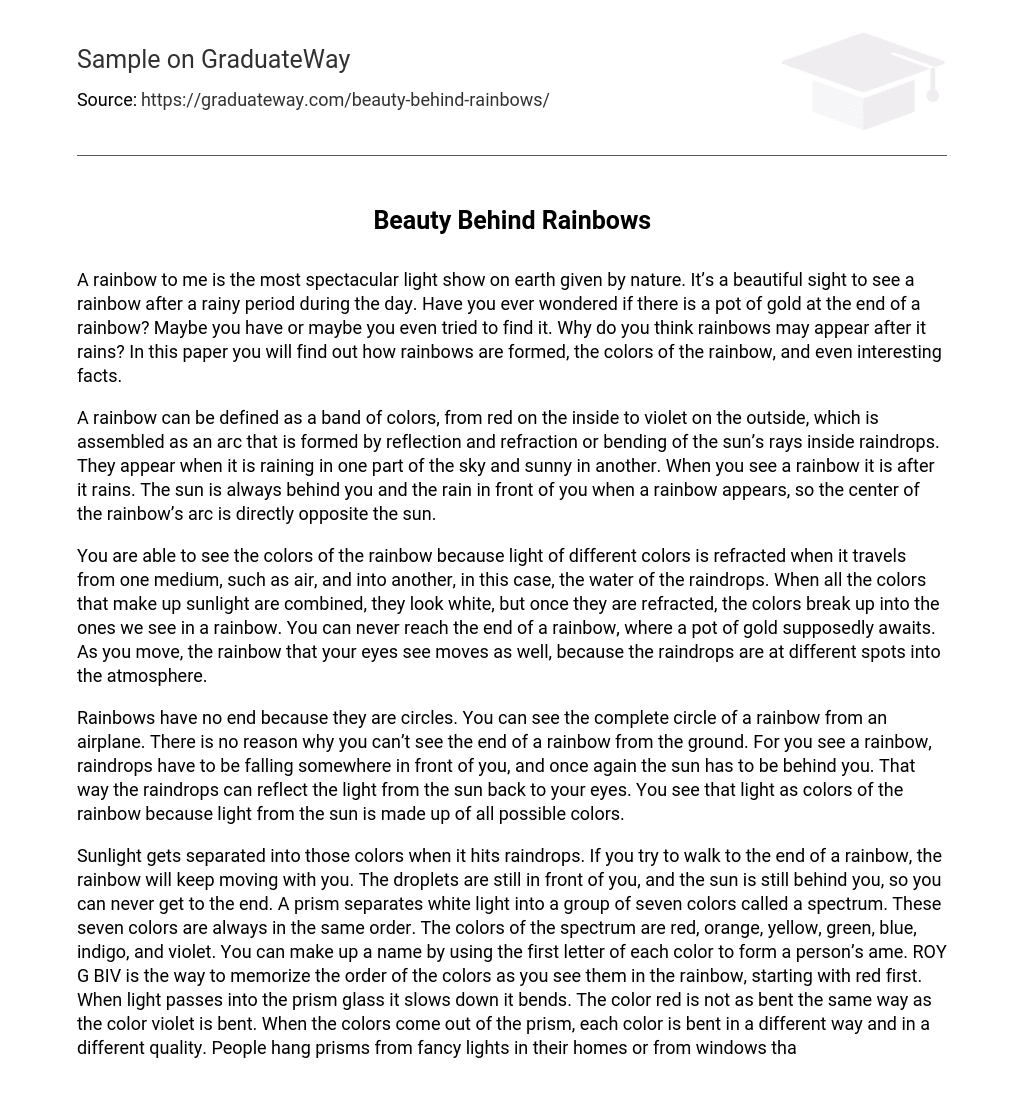A rainbow is nature’s most spectacular light show. It is a breathtaking sight to witness a rainbow emerge after a period of rain during the daytime. Have you ever pondered the existence of a pot of gold at the rainbow’s end? Perhaps you have or even attempted to locate it. What causes rainbows to appear following rainfall? This article will explore the formation of rainbows, the various colors they exhibit, and intriguing facts about them.
When it rains in one area while being sunny in another, the sun’s rays reflect and refract within raindrops to form a rainbow. This colorful band spans from red to violet and takes on an arc shape. The rainbow becomes visible after rainfall, with the sun positioned behind the viewer and the rain in front. Consequently, the center of the rainbow’s arc lines up directly opposite to the sun.
The colors of the rainbow are seen because light bends when it moves from one substance to another. For instance, when sunlight goes through the air and enters rainwater droplets, it splits into different colors and forms a rainbow. At first, sunlight looks white since it has all colors together. However, once it bends or refracts, we can see the individual colors as a rainbow. Although many people believe there is a pot of gold at the end of a rainbow, it is impossible to reach it. Furthermore, the position of the observed rainbow changes because raindrops are found at various locations in the atmosphere.
Rainbows are circular and endless. From an airplane, the entire circle of a rainbow is visible, while from the ground, only its end can be seen. In order to observe a rainbow, raindrops must fall in front of you with the sun positioned behind you. The raindrops reflect sunlight back to your eyes, and this reflection appears as the various colors of the rainbow since sunlight encompasses all colors.
When sunlight encounters raindrops, it separates into its constituent colors. If one attempts to approach the end of a rainbow, it will continuously move in sync with the observer. Thus, the droplets remain ahead while the sun remains behind, rendering reaching the rainbow’s end futile. A prism is capable of segregating white light into a sequence of seven colors called a spectrum, always appearing in the same order: red, orange, yellow, green, blue, indigo, and violet. An acronym, ROY G BIV, was devised to easily recall this color sequence when observing a rainbow, starting with red. As light enters the prism glass, it slows down and alters its direction. Red and violet are not bent in the same manner; red experiences less of a bend compared to violet. Upon exiting the prism, each color bends uniquely in terms of direction and intensity. Prisms are often hung from fancy lights or windows where sunlight penetrates homes to fill rooms with an array of rainbows.





